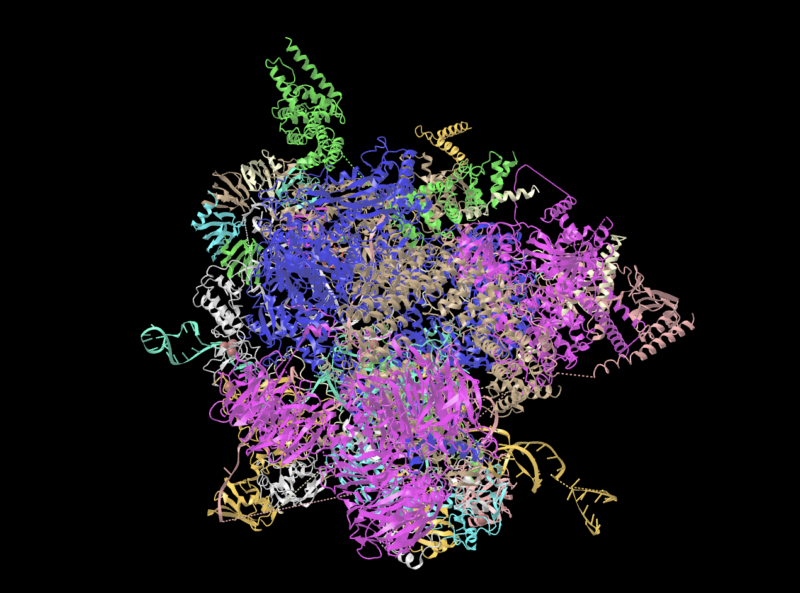
Almost 1,500 genes have been implicated in intellectual disabilities; yet for most people with such disabilities, genetic causes remain unknown. Perhaps this is in part because geneticists have been focusing on the wrong stretches of DNA when they go searching. To rectify this, Ernest Turro—a biostatistician who focuses on genetics, genomics, and molecular diagnostics—used whole genome sequencing data from the 100,000 Genomes Project to search for areas associated with intellectual disabilities.
His lab found a genetic association that is the most common one yet to be associated with neurodevelopmental abnormality. And the gene they identified doesn’t even make a protein.
Trouble with the spliceosome
Most genes include instructions for how to make proteins. That’s true. And yet human genes are not arranged linearly—or rather, they are arranged linearly, but not contiguously. A gene containing the instructions for which amino acids to string together to make a particular protein—hemoglobin, insulin, serotonin, albumin, estrogen, whatever protein you like—is modular. It contains part of the amino acid sequence, then it has a chunk of DNA that is largely irrelevant to that sequence, then a bit more of the protein’s sequence, then another chunk of random DNA, back and forth until the end of the protein. It’s as if each of these prose paragraphs were separated by a string of unrelated letters (but not a meaningful paragraph from a different article).
In order to read this piece through coherently, you’d have to take out the letters interspersed between its paragraphs. And that’s exactly what happens with genes. In order to read the gene through coherently, the cell has machinery that splices out the intervening sequences and links up the protein-making instructions into a continuous whole. (This doesn’t happen in the DNA itself; it happens to an RNA copy of the gene.) The cell’s machinery is obviously called the spliceosome.
There are about a hundred proteins that comprise the spliceosome. But the gene just found to be so strongly associated with neurodevelopmental disorders doesn’t encode any of them. Rather, it encodes one of five RNA molecules that are also part of the spliceosome complex and interact with the RNAs that are being spliced. Mutations in this gene were found to be associated with a syndrome with symptoms that include intellectual disability, seizures, short stature, neurodevelopmental delay, drooling, motor delay, hypotonia (low muscle tone), and microcephaly (having a small head).
Supporting data
The researchers buttressed their finding by examining three other databases; in all of them, they found more people with the syndrome who had mutations in this same gene. The mutations occur in a remarkably conserved region of the genome, suggesting that it is very important. Most of the mutations were new in the affected people—i.e. not inherited from their parents—but there was one case of one particular mutation in the gene that was inherited. Based on this, the researchers concluded that this particular variant may cause a less severe disorder than the other mutations.
Many studies that look for genes associated with diseases have focused on searching catalogs of protein coding genes. These results suggest that we could have been missing important mutations because of this focus.
Nature Medicine, 2024. DOI: 10.1038/s41591-024-03085-5




















+ There are no comments
Add yours